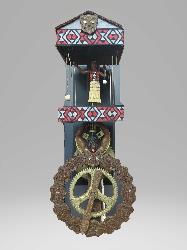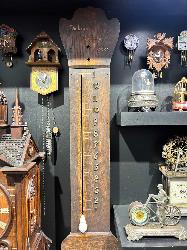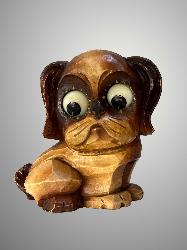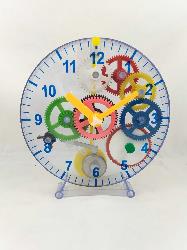Five fun clocks to find at Claphams National Clock Museum
Published on 18 September 2024

Planning a family trip to Whangārei? Make sure to visit Claphams National Clock Museum, where time truly flies!
Here are five unique and entertaining clocks that will captivate visitors of all ages:

1. The Flying Pendulum Clock
Fun Fact: Unlike traditional pendulum clocks, the flying pendulum clock uses the inertia of a weight winding and unwinding around posts to keep time. This concept dates back to Leonardo da Vinci's drawings but was first patented in 1883.
What to look for: A special Kapa Haka-themed clock created by New Zealand engineer Ron Ferguson features a pendulum that mimics a Māori girl's poi. This clock, donated to the museum in 2011, has become a star attraction, mesmerising visitors with its unique movement.

2. The Majestic Sundial
Highlight: Sundials have been used since ancient times, with the Romans popularising them to synchronise their daily activities. Despite their limitations, sundials were invaluable for centuries and were even used to reset early clocks.
What to look for: The sundial in Whangārei's Town Basin is reputedly the largest in the southern hemisphere, with a gnomon stretching 22 metres into the air. It can even be adjusted for Daylight Saving!

3. The Hickory Dickory Dock Clock
Fun Fact: The nursery rhyme "Hickory, Dickory, Dock" dates back to the 17th century and was first published in 1744. The rhyme mimics the ticking of a clock and was used to teach children how to tell time.
What to look for: Clapham's' Hickory Dickory Clock, over 100 years old, indicates the time with the mouse's nose. This whimsical clock is a favourite among children and adults alike, sparking curiosity about the origins of the rhyme.

4. The Moving Eye Clocks
Fun Fact: These novelty clocks display the time through each eyeball separately - left for hours, right for minutes - changing expressions from happy to sad. They were made by the Oswald company in Germany from the 1920s to the 1960s.
What to look for: The museum's collection of Oswald clocks includes various designs, from dogs and owls to genies and human skulls. These quirky clocks are sure to amuse and entertain visitors with their playful expressions.

5. The Children's Mechanical Clock
Fun Fact: This colourful clock teaches kids how clocks work by converting potential energy into kinetic energy. The winding of a spring generates the energy that turns the gears, with the escapement mechanism creating the familiar tick-tock sound.
What to look for: The Children's Mechanical Clock at Claphams National Clock Museum is a fascinating educational tool that introduces kids to the basic principles of clock mechanics. On this particular clock, you wind the spring using an oval green knob located at the back. The spring is housed inside a covered red gear to prevent it from unwinding uncontrollably.
Join the Clock Hunt!
Hey kids! Make sure you join the Clock Hunt game and search for special clocks among the more than 1,000 timepieces on display. Complete the hunt and get a special stamp from the friendly team.
Claphams National Clock Museum is just one of Whangārei's must-see attractions. Looking to plan your trip? Dive into our Be Inspired section for more helpful content and local tips!